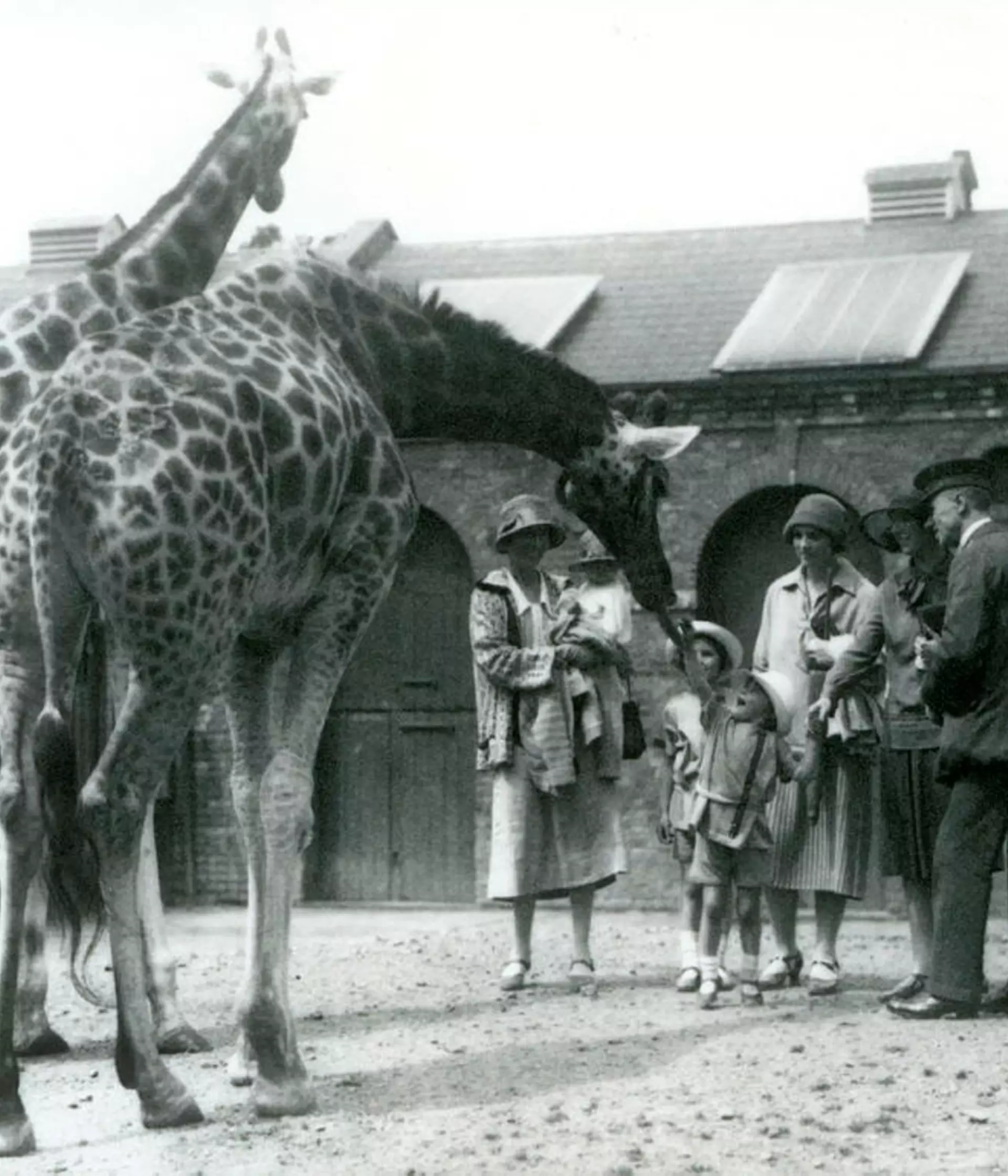The Victorian Zoo
Entering the Giraffe House, you find yourself inside the only Victorian building at London Zoo that’s still used for its original purpose – providing a comfortable home for our tallest residents!
In the early hours of 25 May 1836, a remarkable procession took place through the streets of London. Four young giraffes were walked by their attendants from the docks at Blackwall to the Zoo in Regent’s Park, accompanied by a police escort to keep the roads clear. The three males and one female (known as Selim, Mabrouk, Guib-allah and Zaida) had been transported from Sudan by a French trader, Monsieur Thibaut. They were not only the Zoo’s first giraffes, but virtually the first of their species to be seen in England. Their sole predecessor was a female giraffe that had been given to George IV and lived briefly in the royal menagerie at Windsor.
Not surprisingly, the giraffes’ arrival at the Zoo caused a public sensation, and providing these new residents with suitable accommodation was a priority. On arrival, the group was initially housed in an elephant barn, but the new Giraffe House was completed for them in June 1837.
Decimus Burton architecture
The Giraffe House was designed by Decimus Burton, the Zoo’s original architect. Unlike some of his earlier, more picturesque Zoo buildings, it was relatively simple and functional in design. Being purpose-built for giraffes, the brick ‘shed’ was suitably tall, reaching 6.5m (21 feet) at the eaves. It also included an early central heating system, designed by inventor Charles Sylvester, to help keep the giraffes comfortable.
East and west wings were added to the building 12 years later. The east wing housed the Zoo’s famous hippopotamus Obaysch – the first hippo ever seen in England – and the west wing accommodated eland antelopes, and later, zebras.
Pioneering giraffe breeding success
Between 1839 and 1867, 17 giraffe calves were born to the group at the Zoo. Queen Victoria recorded seeing one of these in her diary on 31 March 1852, after visiting with her eldest daughters. “A little giraffe was born at 5 this morning & was lying in the straw.”
In 1940, a World War II bomb damaged the west part of the Giraffe House and the zebra wing. One of the zebras escaped, but was rounded up later in Camden Town.
The Giraffe House was renovated in 1960-63 when this part of the Zoo was being developed, with new buildings and paddocks added around the original building.
The Giraffe House today
In the 185 years since it was built, the Giraffe House has rarely been unoccupied. Despite the extensive intervening renovations, it retains a number of original features, including its distinctive tall, rounded stable doors. Now Grade II listed, the Giraffe House is one of the oldest zoo buildings in the world that is still used to house its intended residents.
Today, you can get even closer to nature with our animal experiences at the Zoo.
